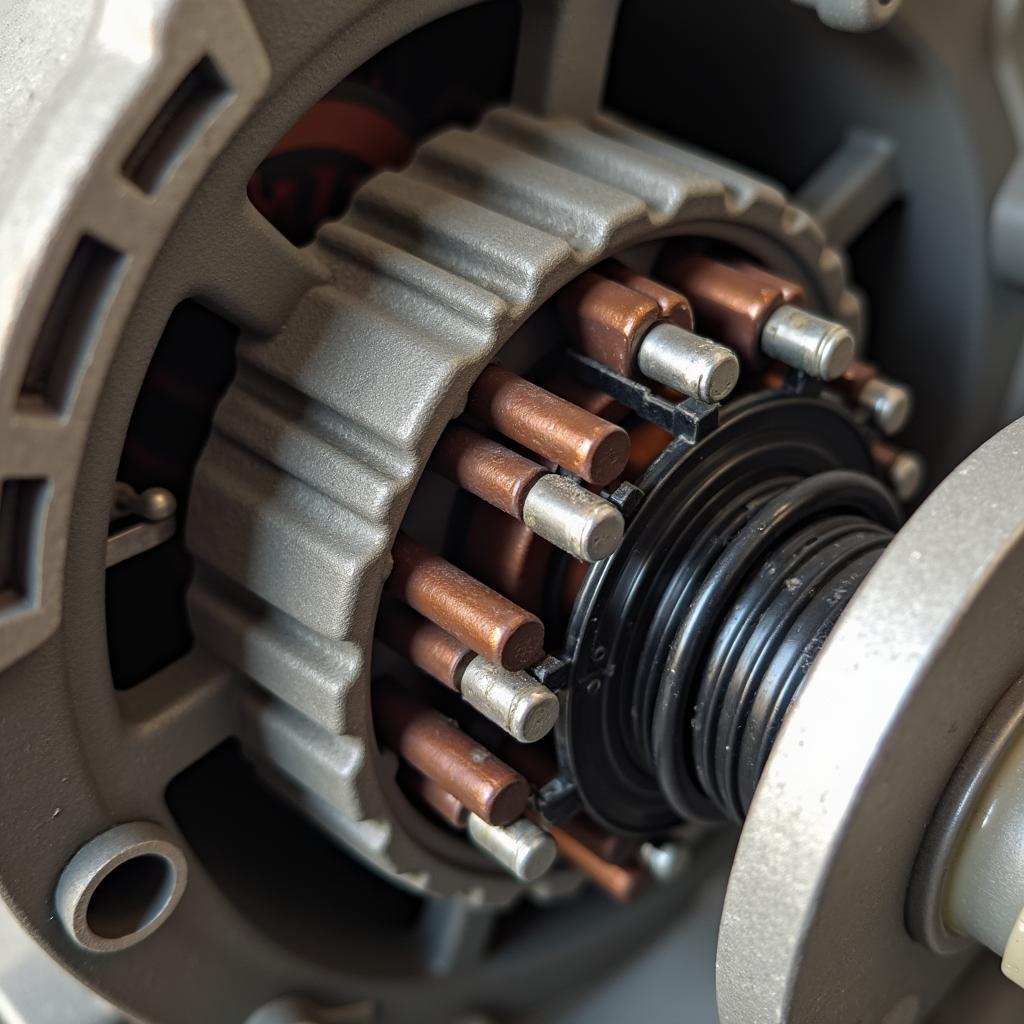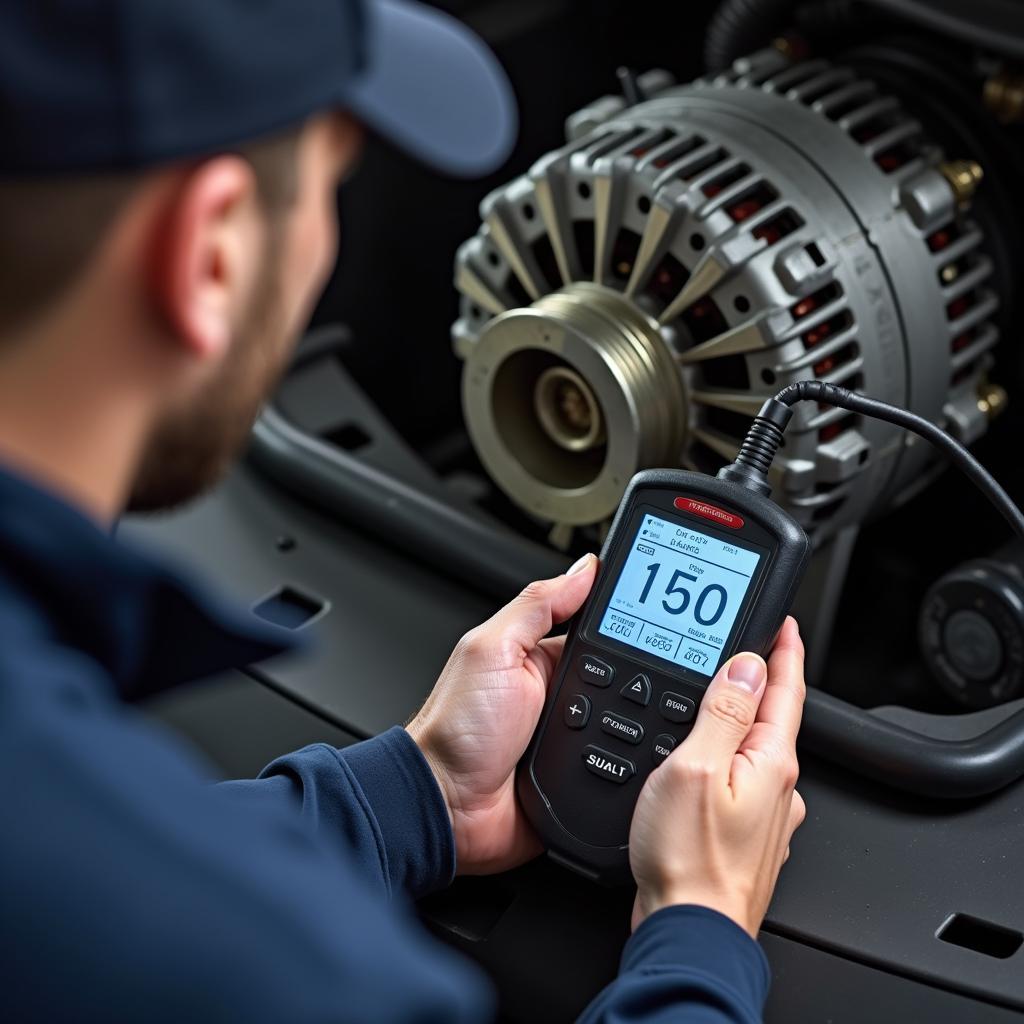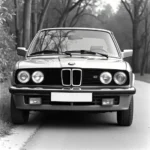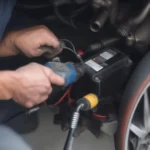The alternator is the heart of your car’s electrical system. It ensures the battery stays charged and supplies power to all electrical consumers. A vital component of the alternator are the carbon brushes, also known as slip rings. These small components play a big role in the functionality of the entire system. In this article, you’ll learn everything you need to know about alternator carbon brushes: from their function and importance to signs of wear and replacement.
Check Your Motorcycle Alternator
What Are Alternator Carbon Brushes and Why Are They Important?
Carbon brushes are small, rectangular blocks made of a special carbon compound. They conduct current from the regulator to the rotor winding of the alternator. Without these brushes, the alternator would not be able to generate electricity. Imagine the carbon brushes as small bridges that enable the flow of current. Their role is essential for the proper function of the entire electrical system.
 Alternator Carbon Brushes
Alternator Carbon Brushes
Signs of Wear: How to Recognize Defective Carbon Brushes
Carbon brushes are subject to natural wear. Due to constant friction on the rotor, they wear down over time. Typical signs of defective carbon brushes include:
- Flickering Lights: The headlights flicker, especially at idle.
- Weak Battery: The battery is no longer charging properly.
- Illuminated Warning Lights: The charging indicator light on the dashboard illuminates.
- Starting Problems: The engine starts poorly or not at all.
Experience shows these problems often occur after extended operation. “Wear of carbon brushes is a classic problem in older vehicles,” says Dr. Ing. Hans Müller, author of the book “Car Electrics for Beginners”.
Replacing Carbon Brushes: Here’s How!
Replacing carbon brushes is generally not a complicated procedure and can often be done yourself. However, it requires some manual dexterity and the right tools. Here is a brief guide:
- Disconnect the Battery: First, remove the negative cable from the battery to avoid a short circuit.
- Remove the Alternator: Undo the bolts and connectors of the alternator and take it out of the engine compartment.
- Remove the Regulator: The regulator is usually located on the back of the alternator and is secured with bolts.
- Replace the Carbon Brushes: The old carbon brushes can now be removed and the new ones inserted.
- Reassembly: Reinstall the alternator and battery.
 Replacing Alternator Carbon Brushes
Replacing Alternator Carbon Brushes
Preventive Measures and Tips
- Regular Inspection: Have the alternator and carbon brushes checked regularly by a workshop.
- High-Quality Carbon Brushes: Use high-quality replacement parts when replacing.
- Proper Care: Ensure a clean and dry environment for the alternator.
Frequent Questions About Alternator Carbon Brushes
- How long do carbon brushes last? The lifespan of carbon brushes varies depending on the vehicle and driving style, but is usually between 50,000 and 150,000 kilometers.
- Can I replace the carbon brushes myself? Yes, with some manual dexterity, replacement is possible yourself.
- How much do new carbon brushes cost? The cost for new carbon brushes is relatively low and is usually between 10 and 30 Euros.
Related Topics
- Alternator Testing
- Battery Maintenance
- Car Electrics
Need Help?
Having problems with your alternator or carbon brushes? Contact us! Our auto experts are available 24/7 and are happy to assist you. We offer professional support for all your car repair questions.
 Mechanic diagnosing the alternator
Mechanic diagnosing the alternator
Conclusion: Small Parts, Big Impact
Alternator carbon brushes are small but essential for the function of your car. Pay attention to signs of wear and replace the carbon brushes in time to avoid major damage. For questions or problems, we are here to help. Feel free to share this article with other drivers and leave us a comment!

